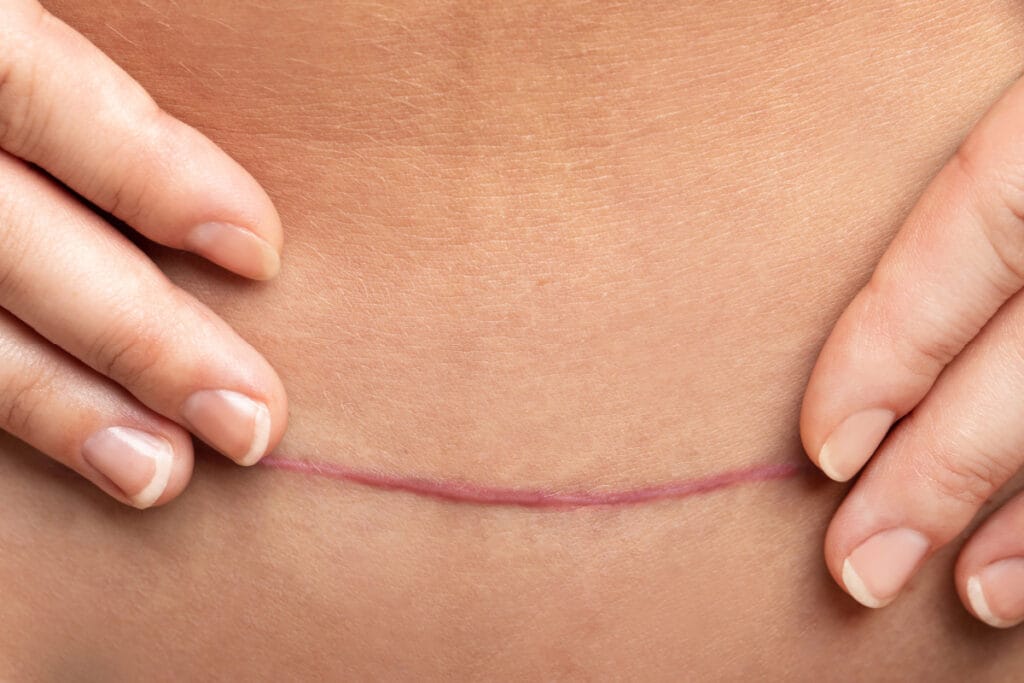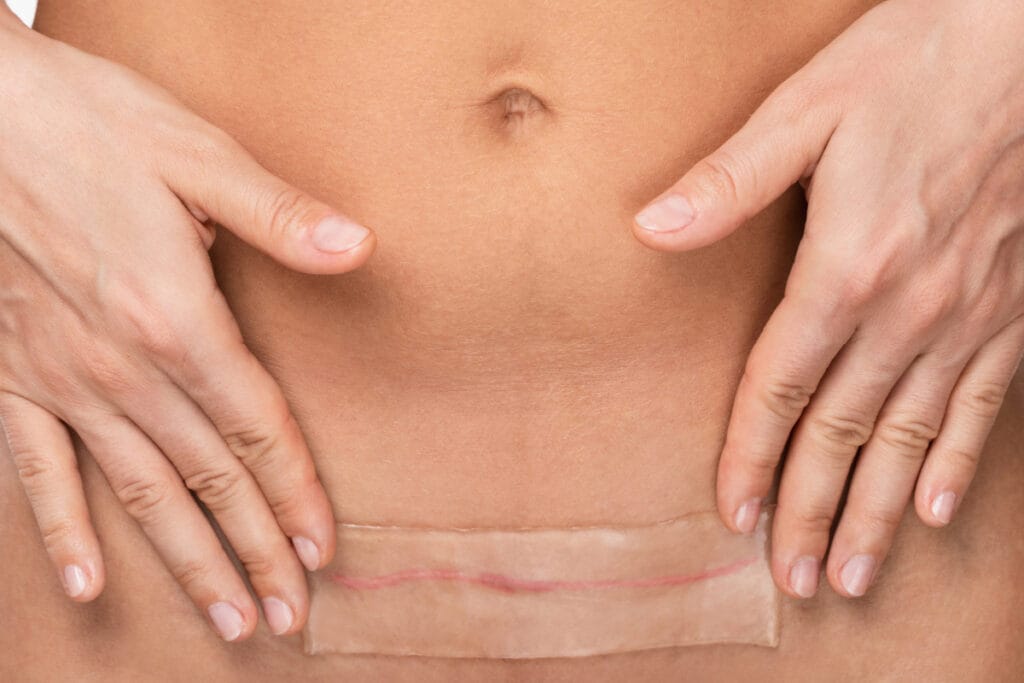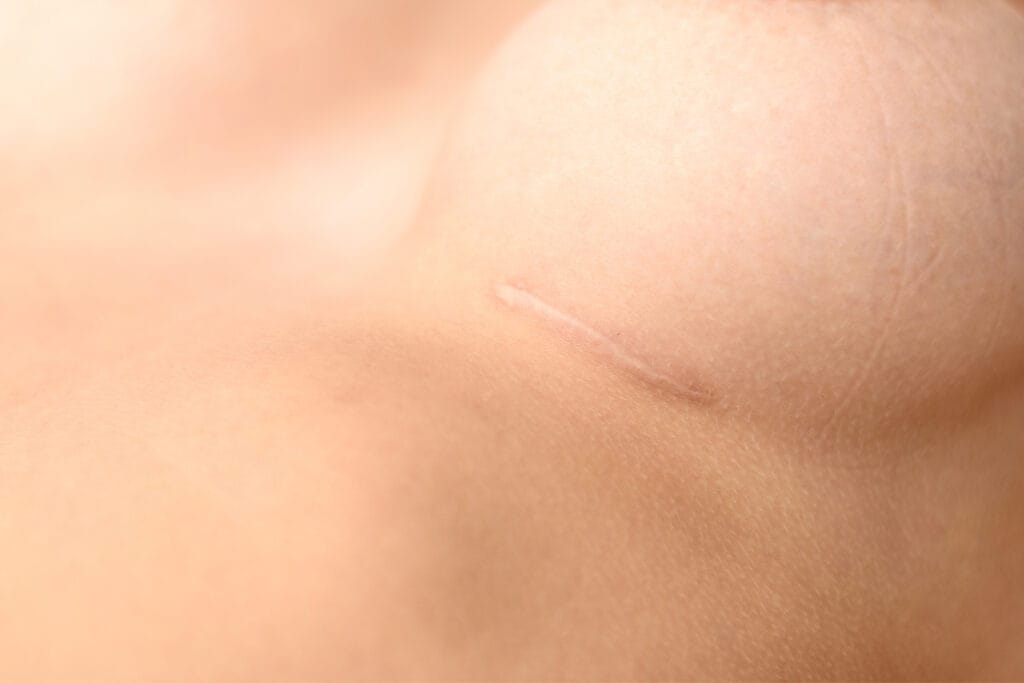Top Tips for Post-Surgery Scarring: A Guide from Board Certified Cosmetic Surgeons
| ABCS
Scarring is a natural part of the healing process after any cosmetic surgical procedure. But the final appearance of your scars does not have to be left to chance. The foundation of excellent scar outcomes begins in the operating room, where cosmetic surgeons certified by the American Board of Cosmetic Surgery (ABCS) use meticulous surgical techniques and strategic incision placement—skills honed through rigorous training, experience, and attention to detail—to minimize visible scarring from the start. Beyond the procedure itself, cosmetic surgeons certified by the American Board of Cosmetic Surgery (ABCS) understand that patients want to minimize visible scarring while ensuring optimal healing.
Below, we outline evidence-based strategies for scar management following your procedure—plus advanced scar treatment options when additional intervention may be beneficial.
Understanding the scar healing timeline
Immediately after surgery, cosmetic surgery incisions appear red and raised as your body begins the complex process of tissue repair. Over the following months, scars typically flatten, fade, and soften as new collagen layers form and improve the appearance and texture of the scar. This maturation process can take 12-18 months.
Days 1-14: The critical early healing phase
Follow your surgeon’s wound care instructions
Your cosmetic surgeon will provide detailed post-operative care instructions. These guidelines are tailored to your cosmetic surgery procedure and anatomy to prevent infection, minimize tension on incisions, and create optimal conditions for healing. It is imperative that you follow these instructions to the letter and never deviate from them without consulting your surgical team first.
Keep incisions clean and dry
Gentle cleansing with mild soap and water, as directed by your surgeon, helps prevent bacterial contamination that could lead to infection and poor scarring. Pat incisions dry rather than rubbing. You will not be able to submerge your incision in water until cleared by your surgeon to avoid complications.
Avoid sun exposure
UV radiation causes permanent darkening of healing scars and makes them more visible long-term. Keep your incisions covered with loose clothing, and you can transition to a broad-spectrum SPF 30+ sunscreen once your surgeon confirms it’s safe to apply topical products to the area.
Don’t pick, scratch, or manipulate healing tissue
The skin along your incisions is vulnerable during the healing process, so you must be careful not to disrupt healing tissues by overexerting yourself or touching the area unnecessarily. Interfering with the natural healing process can lead to wider and more irregular scars.
Weeks 2-12: Supporting optimal scar maturation
Begin gentle scar massage (when approved)
Once your cosmetic surgeon confirms that incisions have adequately healed (typically 2-3 weeks post-surgery) gentle massage can help break down scar tissue and improve flexibility. Use clean hands to apply light pressure in circular motions for 5-10 minutes, 2-3 times daily. Your cosmetic surgeon will show you exactly what to do once your incision is healed enough to benefit from scar massage.
Consider silicone-based scar treatments
Silicone sheets or gels are among the most scientifically supported topical scar treatments available and work by maintaining optimal moisture levels to help reduce scar thickness and discoloration. ABCS surgeons often recommend starting silicone treatment once incisions are fully closed and provide guidance on brands and application steps.

Prioritize consistent sun protection
Continue diligent sun avoidance and SPF application. Sun exposure during this period can result in permanent pigmentation changes, and scars remain particularly vulnerable to UV damage for months after surgery. Even fully mature scars, just like normal skin, need sun protection to prevent accelerated aging and an increased risk of skin cancers.
Stay hydrated and maintain good nutrition
Proper hydration and adequate protein intake support your body’s ongoing collagen production and tissue remodeling processes to help your scar heal as imperceptibly as possible. Your cosmetic surgeon may recommend nutritional supplements if you have concerns about your healing progress.
Months 3-18: Long-term scar optimization
Maintain healthy lifestyle habits
Avoid habits that impair your ability to heal. Smoking, excessive alcohol consumption, and poor nutrition can all limit your body’s natural ability to remodel scar tissue over time.
Be patient with the scar maturation process
Surgical scars continue to improve for up to 18 months after surgery: what appears raised or discolored at three months may flatten and fade significantly by the one-year mark. If you still desire improvement in your scar’s appearance after 18 months, make an appointment with your cosmetic surgeon for guidance on the next steps.
Advanced scar management options
If your cosmetic surgery scars are still concerning after they have fully matured, make an appointment with your cosmetic surgeon to share your concerns and discuss the next steps. Your cosmetic surgeon will likely recommend one of the treatment options (or a combination of treatments) below.
Laser and energy-based treatments
Various laser technologies can address different aspects of scar appearance, such as discoloration and poor texture. Based on your unique case, your cosmetic surgeon may recommend fractional lasers, IPL treatments, and other skin resurfacing options to smooth and fade cosmetic surgery scars. Traditional microneedling is also a popular scar-refining treatment option.
Scar revision surgery
When conservative treatments do not achieve desired results, scar revision surgery may be appropriate. During scar revision surgery, your cosmetic surgeon meticulously removes the problematic scar tissue and re-closes the incision using advanced techniques to achieve a more pleasing scar appearance once fully healed. Remember to allow up to 18 months for a surgical scar to fully mature.
ABCS board certified cosmetic surgeons have specialized training in scar revision techniques and can evaluate whether this option aligns with your goals.
Medical tattooing (paramedical tattooing)
Medical tattooing can help camouflage discoloration by matching the surrounding skin tone to better conceal scars that remain visible after complete healing. Some ABCS surgeons offer this service in their practices or can refer you to qualified professionals who understand skin anatomy and color theory to achieve ideal results.

The importance of choosing an experienced surgeon
Perhaps the most important factor in minimizing scarring is selecting a board certified cosmetic surgeon who uses meticulous surgical techniques and places incisions strategically to minimize visible scarring. ABCS surgeons undergo rigorous training specifically in cosmetic procedures and understand how to balance achieving your aesthetic goals with optimal wound healing. Use our online directory to find an ABCS board certified cosmetic surgeon near you.